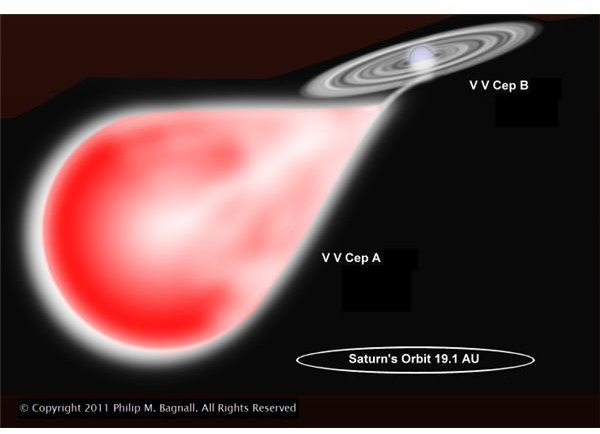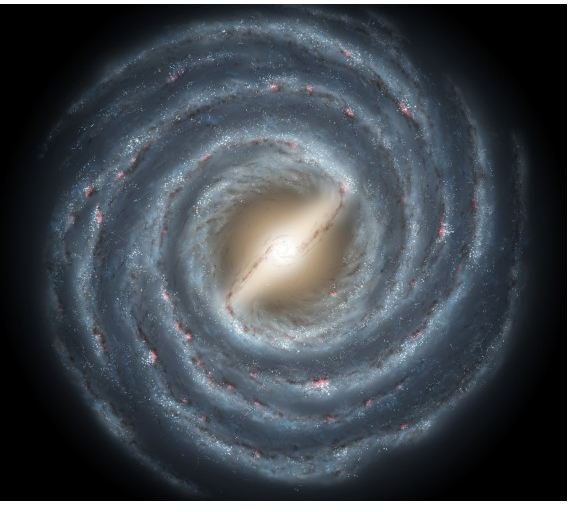The Sun Compared to Other Stars
Our Untypical Sun
Pick up almost any book or go to any website about the Sun and it will almost certainly tell you that the Sun is a “typical” or “average” star. But walk into your back yard and look up the stars you see in, say, StarList 2000 and the Sun seems anything but typical. In fact, it seems to be a bit of an oddity. So how does the Sun compare to other stars?
Let’s consider the Sun’s mass, for example, which is estimated to be about 333,000 times the mass of the Earth. If the Sun is typical or average then surely we should see a fair number of stars in the night sky that have similar masses? But this is not the case. At least 90% of the stars visible to the naked eye have a mass greater than the Sun with the average coming in at about 4.6 solar masses. Many are considerably more massive with perhaps the title of most massive going to the star Eta Carinae, which weighs at least 100 and possibly 150 solar masses. Astronomers have long thought that 150 solar masses was the absolute limit, but a star discovered in 2010 by a team at the University of Sheffield in England discovered a 300 solar mass star known as RMC 136a. Compared to such celestial giants our own Sun looks positively puny.
Mass is one thing: diameter is another. A star that is 100 times more massive than the Sun will not necessarily be 100 times as big. In fact, most giant stars that are many times bigger than the Sun have masses that are only equivalent to a few Suns. So perhaps we should look at diameter instead?
The Sun’s Diameter
The Sun is big. In fact, it is 109 times the diameter of the Earth and could easily accommodate 1,303,782 Earths – and there would still be plenty of room to swing a cat*. But, despite this. astronomers refer to it as a dwarf star. Yet, a glance at the data shows that only about 17 per cent of the stars we see are comparable to the Sun with the average being about 36 solar diameters across. Again, there are some truly big stars around. Probably the biggest visible without a telescope is V V Cephei which is thought to be around 2,000 times the diameter of the Sun. Put V V Cephei in the center of the Solar System and it will swallow up Mercury, Venus, Earth, Mars, the entire Asteroid Belt, Jupiter and Saturn. While these “red hypergiants” are truly impressive, they never last very long, burning out in just a few million years, compared to our Sun which will last for about 10,000 million years (10 billion years).
The Shape of the Sun

Even when we look at the shape of the Sun, something seems to be amiss. The Sun, like the Earth, rotates on its polar axis. Unlike the Earth it displays “differential rotation,” with the equator spinning at 2 km/sec (4,474 mph) and taking 25 days to rotate just once. At the Sun’s poles the rotation is much slower at 34.4 days. Only about 4 per cent of stars rotate at 2 km/sec. Although some stars rotate more slowly many of the stars we see in the night sky rotate much faster with about 27 percent rotating at speeds in excess of 100 km/sec (224,000 mph). Perhaps the fastest spinner is Alpha Arae at an estimated 410 km/sec (a staggering 917,000 mph!).
When a star rotates at high velocity, strange things start to happen. Our Sun is almost a perfect sphere because it rotates so slowly. Faster spinning stars deform into oblate spheroids. Gravity pulls the poles inwards while the equator bulges outwards. The gasses between the poles are compressed and become extremely hot so the poles glow white. Meanwhile the gasses around the equator are more dispersed and cooler and therefore darker, so we end up with a hamburger shaped star with a dark band around its middle. Certainly nothing like the Sun.
Although we do not yet have the technology to directly image fast spinning stars we can get some idea of what they look like by studying the planet Saturn. Despite being considerably larger than the Earth, Saturn spins once on its axis every 10.6 hours, less than half of the Earth’s 24 hours. Like a rapidly spinning star, its poles are pulled inwards so the planet is about 8.5 Earth diameters from pole to pole but 9.5 Earth diameters across its equator. Its oblate shape can clearly be seen in photographs.
Making Sense of What We See

So where does this notion come from that the Sun is a typical, average star?
Well, truth is, it is typical and very much average if we consider the Milky Way Galaxy as a whole. But what we see in the night sky is a filtered, biased sample. Stars like the Sun are numerous but they are also too small, too faint and usually too far away to be seen. So we tend to see only the bigger, brighter, closer stars. The situation is exacerbated if you live in a town or city where light pollution bleaches out all but the brightest stars. If, however, you are lucky enough to live in the countryside miles away from the city, and you can clearly see the Milky Way, then you will see a more representative sample of the stars that make up the Galaxy. Only then does the Sun start to look “typical”.
For a full run down of solar facts and figures see Nairn’s Nothing But The Facts About The Sun.
________________________________________
*Did you know that the term “swing a cat” has nothing to do with your pet moggy? It refers to a “cat o’ nine tails”, a type of multi-strand whip.
References
ARNOLD HANSLMEIER: The Sun a Typical Star https://www.springerlink.com/content/t5m840j41j343x22/
Richard Dibon-Smith StarList 2000 (Wiley)
Sun data: NASA’s Sun Facts at https://solarscience.msfc.nasa.gov/
Supermassive star RMC 136a: https://www.ras.org.uk/news-and-press/157-news2010/1867-300-solar-mass-star
Saturn: https://nssdc.gsfc.nasa.gov/image/planetary/saturn/saturn.jpg
